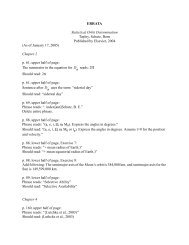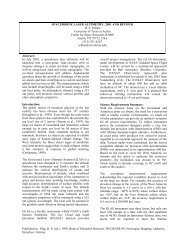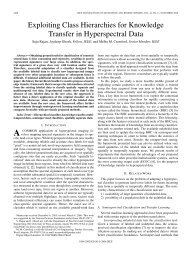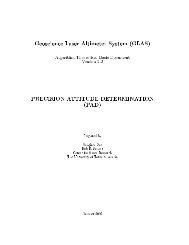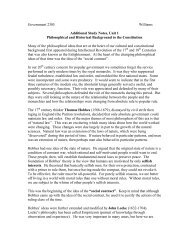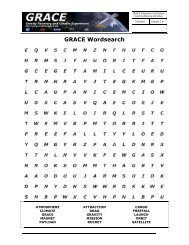Unit 3 Lecture Notes (PDF format)
Unit 3 Lecture Notes (PDF format)
Unit 3 Lecture Notes (PDF format)
- No tags were found...
You also want an ePaper? Increase the reach of your titles
YUMPU automatically turns print PDFs into web optimized ePapers that Google loves.
y the Chief Justice of the Supreme Court. At the end of the trial the<br />
members of the Senate vote for or against conviction. If, by a 2/3’s vote of<br />
the members of the Senate, the president is found guilty, then he is removed<br />
from office and is not allowed to ever hold public office again.<br />
No president has ever been removed from office. Two presidents, Andrew<br />
Johnson and William Clinton, both were impeached by the House, but failed<br />
conviction by the Senate (Johnson by a mere one vote), thus avoiding<br />
removal from office. President Richard Nixon, who was under investigation<br />
by the House and the Senate for crimes associated with the Watergate breakin,<br />
was forced to resign the presidency due to the fact that he knew he was<br />
going to be impeached and convicted. Rather than face the humiliating<br />
process he chose resignation instead.<br />
Organization of the Presidency<br />
The president is often called the “chief executive” because he oversees the<br />
executive branch of government. In today’s government this is a huge task.<br />
The modern presidency is a complex office and a very large organization.<br />
We cannot begin to understand the presidency without also having some<br />
type of understanding of the bureaucracy that serves underneath the<br />
president. When we speak of the growth of government, we mostly mean<br />
the growth of the executive branch. Before we start to consider what we<br />
mean by “bureaucracy”, let’s take a look at the organization of the<br />
presidency and the executive branch.<br />
White House staff: most direct and personal services. Includes president’s<br />
Chief of Staff, personal assistants, close personal advisors, press agents,<br />
legislative and group liaison aides, and other special assistants. (totals<br />
around 600 people who work in the White House). Presidents organize the<br />
White House staff the way they want them. Most presidents employ a<br />
hierarchical structure with the chief of staff at the top overseeing the rest of<br />
the staff.<br />
Executive Office of the President. Provides support services to the president<br />
in several policy areas. Three major policymaking bodies are here: National<br />
Security Council (NSC), Council of Economic Advisors (CEA), and Office<br />
of Management and Budget. (several other small units also exist to serve the<br />
president, but these are the main ones in EOP).



